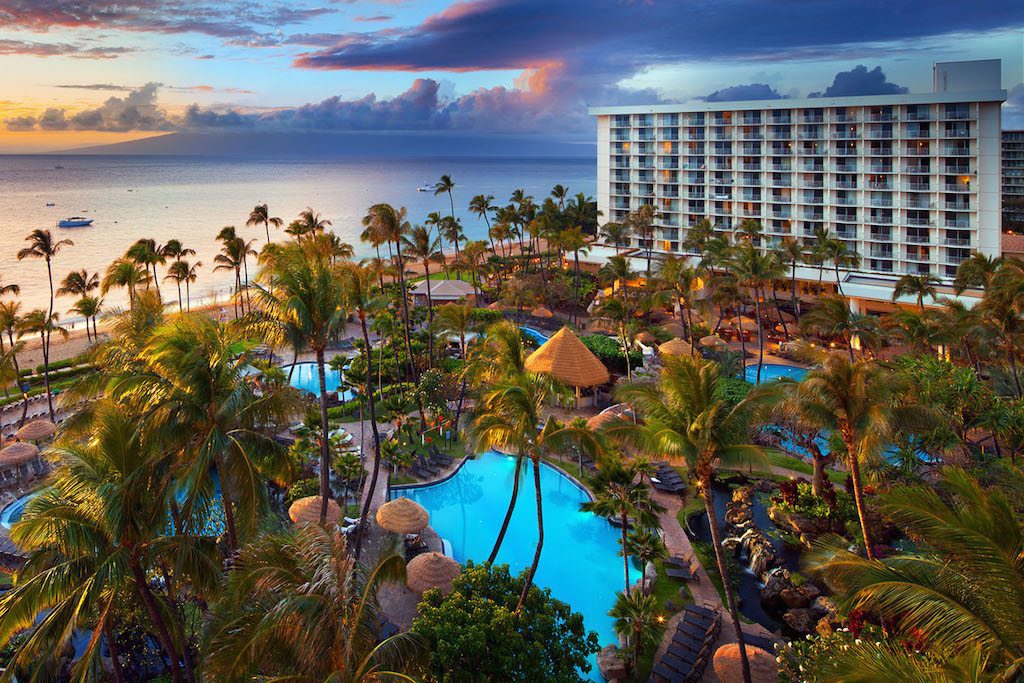Skift Take
Hotel by hotel, Marriott is transforming the Starwood legacy business into something more reflective of its own hospitality management style, meaning going asset light all the way.
Marriott International, the world’s largest hotel company with 30 brands and almost 6,000 hotels around the globe, is known throughout the hospitality and travel industry for pursuing a purely “asset-light” management model.
Today, Marriott announced its latest move meant to complement its existing financial strategy and to help the company get that much closer to achieving some $250 million in annual cost “synergies,” or savings, associated with its $13.3 billion acquisition of Starwood Hotels & Resorts, which was finalized in September.
Marriott completed the sale of its long-term leasehold interest in The Westin Maui Resort & Spa, Kaanapali for $317 million, selling the 759-beachfront resort to Trinity Investments and Oaktree Capital Management. Both Trinity and Oaktree intend to invest in capital improvements that include a renovation of the hotel’s Beach Tower and updates for the resort’s public areas and food-and-beverage outlets.
The Westin resort in Maui is the second Starwood property the company has sold since completing its acquisition of Starwood. The first was the St. Regis San Francisco, which sold for $175 million to the Qatar Investment Authority in December.
“We are proud to announce the sale of this iconic resort property and to expand our portfolio with our strong global partners, Trinity and Oaktree,” said Leeny Oberg, chief financial officer of Marriott International. “The sale demonstrates the strength of the Westin brand and reaffirms our commitment to our asset-light strategy as we continue our merger integration.”
Oberg said Marriott is on track to sell off all of the Starwood properties it intends to, and to achieve approximately $100 million to $185 million of those cost synergies by the end of 2017, with the hope of realizing the full $250 million in savings by the end of 2018.
“We have a great track record of asset recycling,” Oberg told Skift. “We still have 13 hotels as a part of Starwood and we’re in the process of looking at the strategy for each and every one of those hotels. This is actually a continuation of Marriott’s asset-light strategy, which we’ve had for a number of years now.”
Oberg also pointed out that, prior to the close of the merger, Starwood was also in the process of selling off its assets in preparation for the deal.
By selling these properties, Marriott hopes to earn approximately $1.5 billion from these asset sales, and this money will go toward “reinvesting and growing our business even further,” said Oberg. “For the purposes of inheriting some great properties from the Starwood acquisition, we’re working hard to recycle that capital and sell them and end up with long-term management agreements to carry forward with.”
When asked why Trinity agreed to a long-term management agreement with Marriott following the sale, Trinity president and CEO Sean Hehir, said, “We believe that Westin is a very strong brand and there are great advantages to maintaining this flag as we further enhance our portfolio. The transaction underscores Marriott’s success advancing its plan to sell hotels acquired through its merger with Starwood Hotels & Resorts last year.”
Hehir added, “Westin Maui Resort & Spa is one of the largest and most iconic resorts in Maui, ideally located on 12 prime oceanfront acres at the center of the historic Kaanapali Beach and recognized as one of Hawaii’s premier destination resorts. This acquisition further enhances our business objective to build a long-term, global relationship with Marriott.”
Marriott has long developed a reputation for its asset-light strategy, and was one of the first major hospitality companies to spin off part of its business into a real estate investment trust (REIT) to free itself up for this type of business model where it primarily manages and/or manages nearly all of the hotels in its portfolio.
Other hotel companies, including Hilton and AccorHotels most recently, have also followed suit, while Hyatt has pursued a somewhat different “asset-recycling” strategy where it sells off properties to buy more.
As for the timing of the Starwood property sales, during Marriott’s fourth quarter 2016 earnings call, Oberg said, “I can’t really give you a prediction in terms of timing of the asset sales, but we do continue to feel good about the environment and good about our ability to get it done in the timeframe that I described.”
Have a confidential tip for Skift? Get in touch
Tags: marriott, marwood, starwood, westin
Photo credit: Marriott has sold The Westin Maui Resort & Spa, Kaanapali for $317 million. Marriott International / Marriott International
